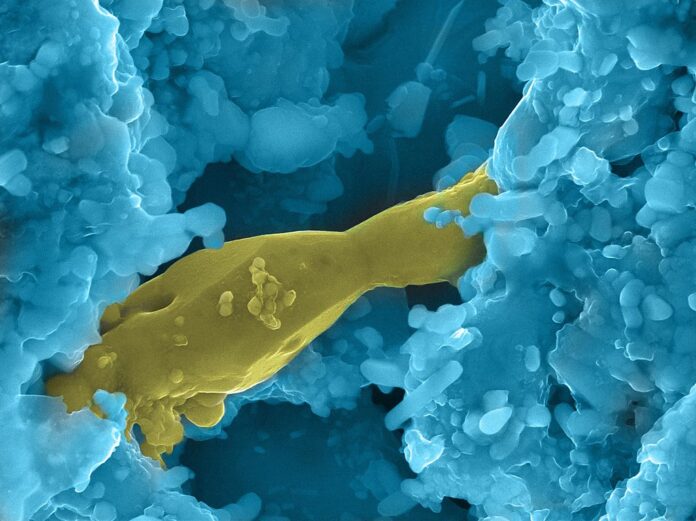
Even uranium and nuclear power plants in the European “green” classification
In December 2021, after a long and intense debate, the European Commission decided to include both nuclear and gas in the so-called “green taxonomy“. This has aroused protests from environmentalists who were thinking of a gradual closure of nuclear power plants in favor of wind, solar and, provisionally, also methane gas. After the disasters of Chernobyl and Fukushima it seemed that there were no more doubts about it. Problems with the disposal of radioactive substances, costs and the dangers of possible terrorist acts all pointed in that direction. However, things have turned out differently.
It will take a long time to eliminate coal, oil, gas…
On closer inspection it was too optimistic to think that France could give up its sixty traditional atomic power plants overnight, and so could other countries. The real problem is the energy transition. Experts say that moving from the current system of energy supply directly to renewable energies is impossible. The plants that will be used to produce renewable energy in industrial quantities will require decades to be built; huge capital investment and decades to be profitable and to work at full capacity. So, for the moment it would be an excellent result even just to eliminate coal-fired power plants in the next decades. Then we will think about oil, gas and eventually we can start talking about energy transition.
…and a lot will be needed to build new plants
Regarding the fourth-generation reactors there is little to say because those few that are in operation are in the experimental phase. It is certain that, like the others, they require at least ten years for their construction. Compared to current reactors they would be smaller. They are already in use on aircraft carriers, submarines, and other large vessels. They would still use radioactive uranium, but it would be cooled not with water but with a sodium-based compound or liquid lead. Theoretically they would be able to burn their own waste. The research is planned in the U.S. and could be operational in 2030, as soon as they will have been tested and verified well. Comprehensive information can be found on the International Forum* site that discusses the issue.
The future of nuclear power
Theoretically they could be used for domestic heating in cities one day. The reason why an in-depth debate is needed is that you cannot start such a major global breakthrough if you are not sure you want to see it through.
* https://www.gen-4.org/gif/jcms/c_40275/faq
Leggi anche:
Il gas russo non può condizionare le scelte politiche dell’occidente
Promosso l'”uranio verde”
Anche l’uranio e le centrali nucleari nella classificazione europea “green”
Nel Dicembre del 2021, dopo un lungo e serrato dibattito la Commissione Europea ha deciso di includere nella cosiddetta “tassonomia green” sia il nucleare che il gas. Ciò a suscitato le proteste degli ambientalisti che pensavano ad una progressiva chiusura delle centrali nucleari in favore dell’eolico, del solare e, provvisoriamente, anche del gas metano. Dopo i disastri di Chernobyl e di Fukushima sembrava che non ci fossero più dubbi al riguardo. I problemi dello smaltimento delle sostanze radioattive, i costi, i pericoli legati a eventuali atti terroristici deponevano in tal senso. Ma le cose sono andate diversamente.
Occorrerà molto tempo per eliminare carbone, petrolio, gas…
A bene vedere era troppo ottimistico pensare che la Francia potesse rinunciare alle sue sessanta centrali atomiche tradizionali dall’oggi al domani e così anche altri Paesi. Il vero problema è la transizione energetica. Gli esperti affermano che passare dall’attuale sistema di forniture energetiche direttamente alle energie rinnovabili è impossibile. Gli impianti che serviranno a produrre energie rinnovabili in quantità industriale richiederanno decenni per essere costruite, enormi capitali di investimento e ancora decenni perché possano remunerarli e funzionare a pieno regime. Quindi per il momento sarebbe un risultato eccellente anche solo eliminare le centrali a carbone nei prossimi decenni. Poi si penserà al petrolio, al gas e alla fine si potrà incominciare a parlare di transizione energetica.
…e ne occorrerà moltissimo per costruire nuovi impianti a uranio
Per quanto riguarda i reattori di quarta generazione c’è poco da dire perché quei pochi che sono in attività, si trovano in fase sperimentale. È sicuro che, come gli altri, richiedono almeno dieci anni per la loro costruzione. Rispetto ai reattori attuali sarebbero più piccoli e sono già in uso su porterei, sommergibili e altre grandi imbarcazioni. Utilizzerebbero comunque uranio radioattivo, ma esso sarebbe raffreddato non con acqua ma con un composto a base di sodio o con piombo liquido. Teoricamente sarebbero in grado di bruciare le loro scorie. La ricerca è pianificata negli Usa e potrebbero essere operativi nel 2030, quando saranno stati testati e verificati bene. Informazioni esaustive si possono trovare nel sito del Forum Internazionale* che tratta il problema.
Uranio verde, dibattito aperto per una svolta impegnativa
Teoricamente un domani potrebbero essere usati per il riscaldamento domestico delle città. Il motivo per cui occorrerà un dibattito approfondito è costituito dal fatto che non si può dare inizio a una svolta tanto impegnativa a livello planetario se non si è sicuri di volerla portare a termine.
* https://www.gen-4.org/gif/jcms/c_40275/faq







